Jerusalem Light Railway
If you ask people around the globe which city they best associate with Israel, chances are they’re going to answer ‘Jerusalem’. And for good reason. Jerusalem is an extraordinary and quite unique city, not just in Israeli terms, or even Middle Eastern terms, but for millions of people across the globe.
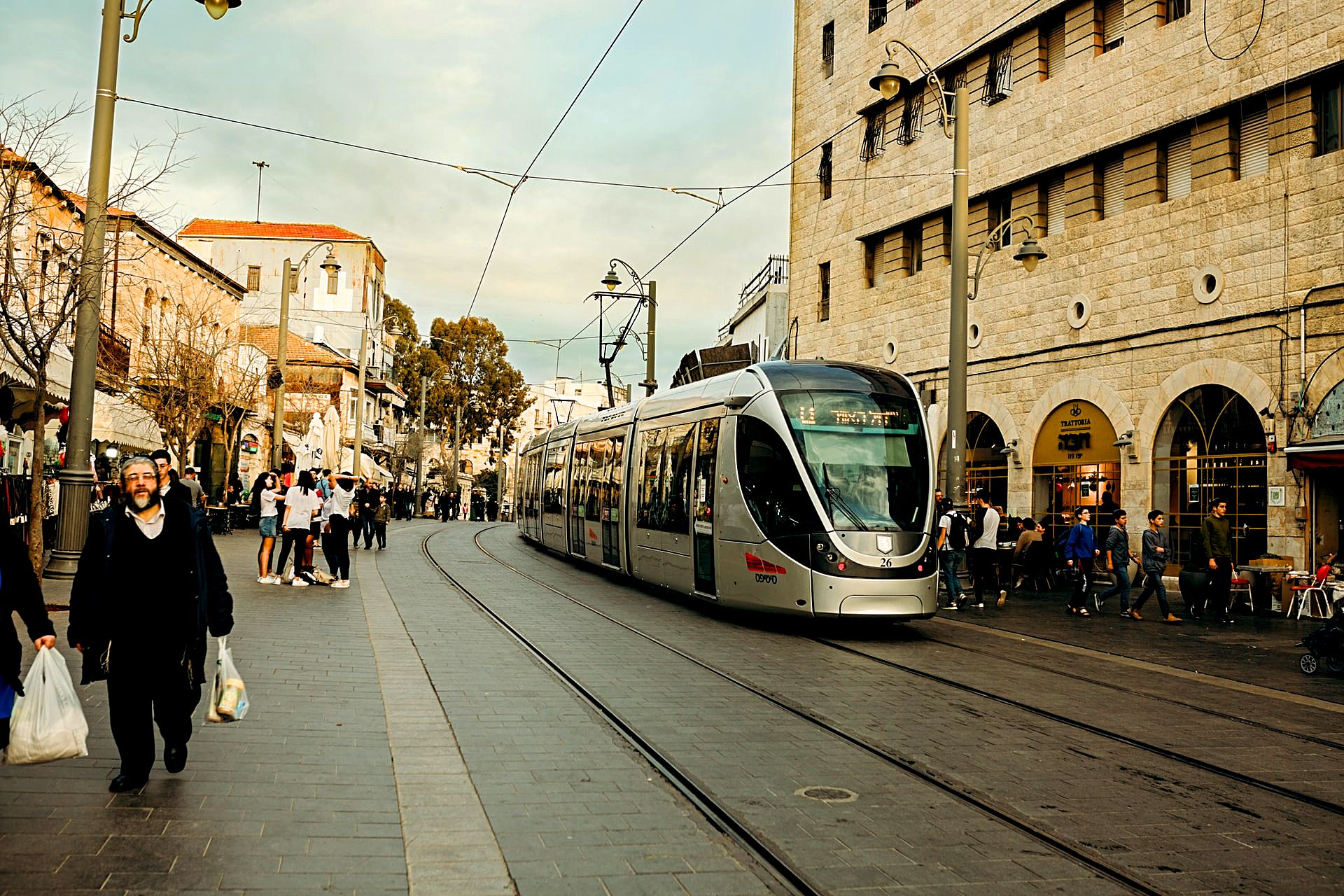
Picture of the Jerusalem Light Rail on Jaffa Street, Israel. Photo by Laura Siegal on Unsplash
Jerusalem - A Unique City
Home to three of the world’s most holy religions - Christianity, Judaism, and Islam - it’s a place just oozing history. All around there are reminders of the past - from the Crusaders, Persians, and Byzantines to the Muslims, Ottomans, and British Mandate. Thousands of years of history - just waiting to be discovered.
And the other good news is that because Israel is so small, covering ground between cities is incredibly easy and makes day trips a piece of cake. If you’re coming from Tel Aviv, for instance, it’s 38 minutes by train and 40-60 by car. Even journeying from further north - say, Haifa - is relatively stress-free when you look at the number of trains Israeli Railways puts on each day.
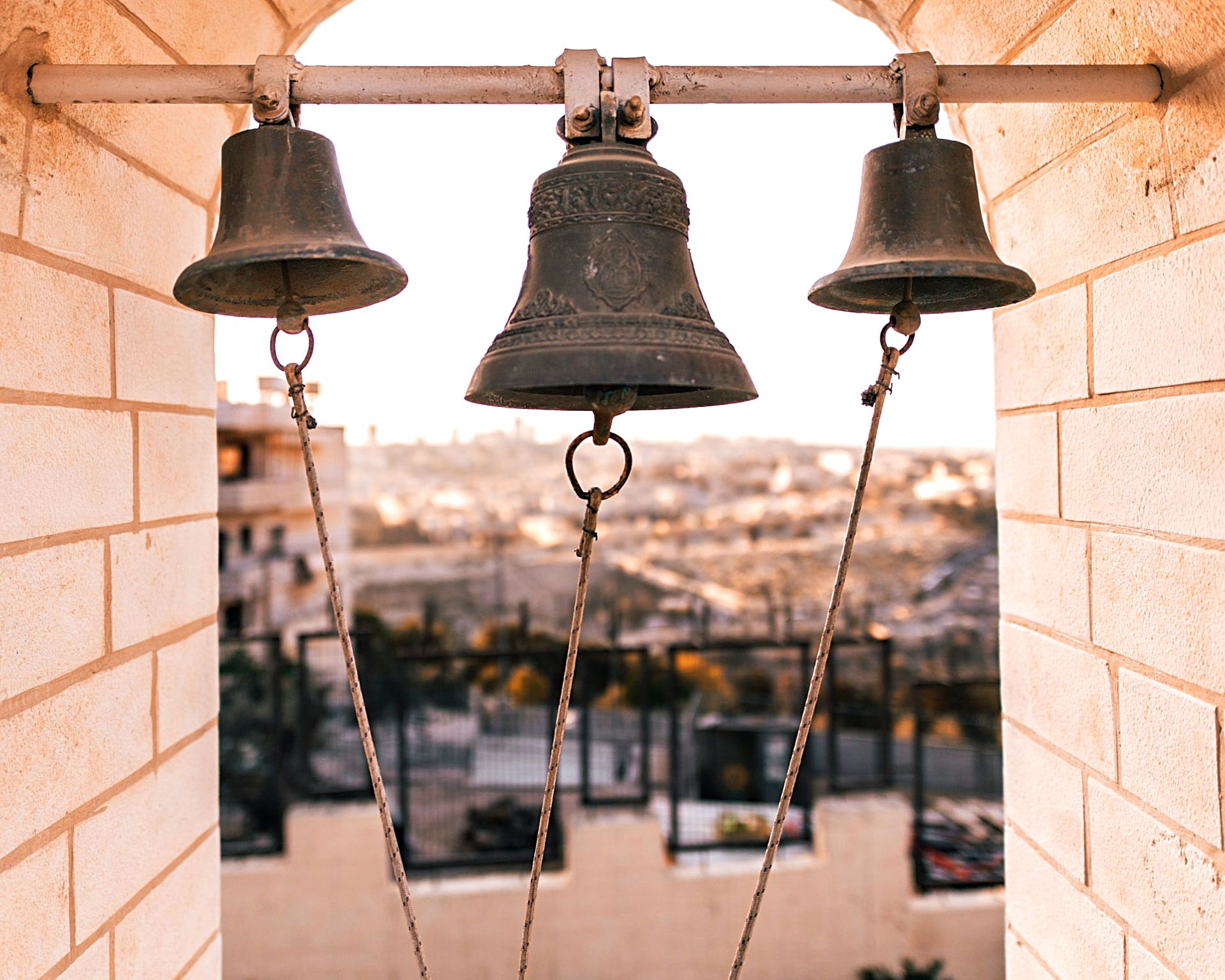
Cathedral bells, Mount of Olives, Jerusalem. Photo by Christian Burri on Unsplash
The Must-Visit City
Although Tel Aviv is definitely the nightlife, foodie, and beach capital of Israel, Jerusalem can hold it on in many other ways. It has world-class museums, art galleries, music venues, and places of worship. And, of course, the Old City, which is a must-visit attraction in Jerusalem.
There is, however, one small practical matter, to be addressed - what’s the best way to get around? Good question. Well, the answer is simple - the Light Railway. The fact is that bringing your car into Jerusalem is a huge headache - parking is scarce and costly, and you’re likely to get stuck in traffic jams too.
Buses are frequent and definitely an option, but they are also subject to the terrible traffic that builds up at certain times of the day (particularly in the city center). Nor is Jerusalem a city for biking in the way Tel Aviv is - it’s way too hilly! Electric scooters have caught on either (we’ve no idea why) and because the city is quite spread out, walking from, say, the Damascus Gate to Ein Kerem is a very long journey!
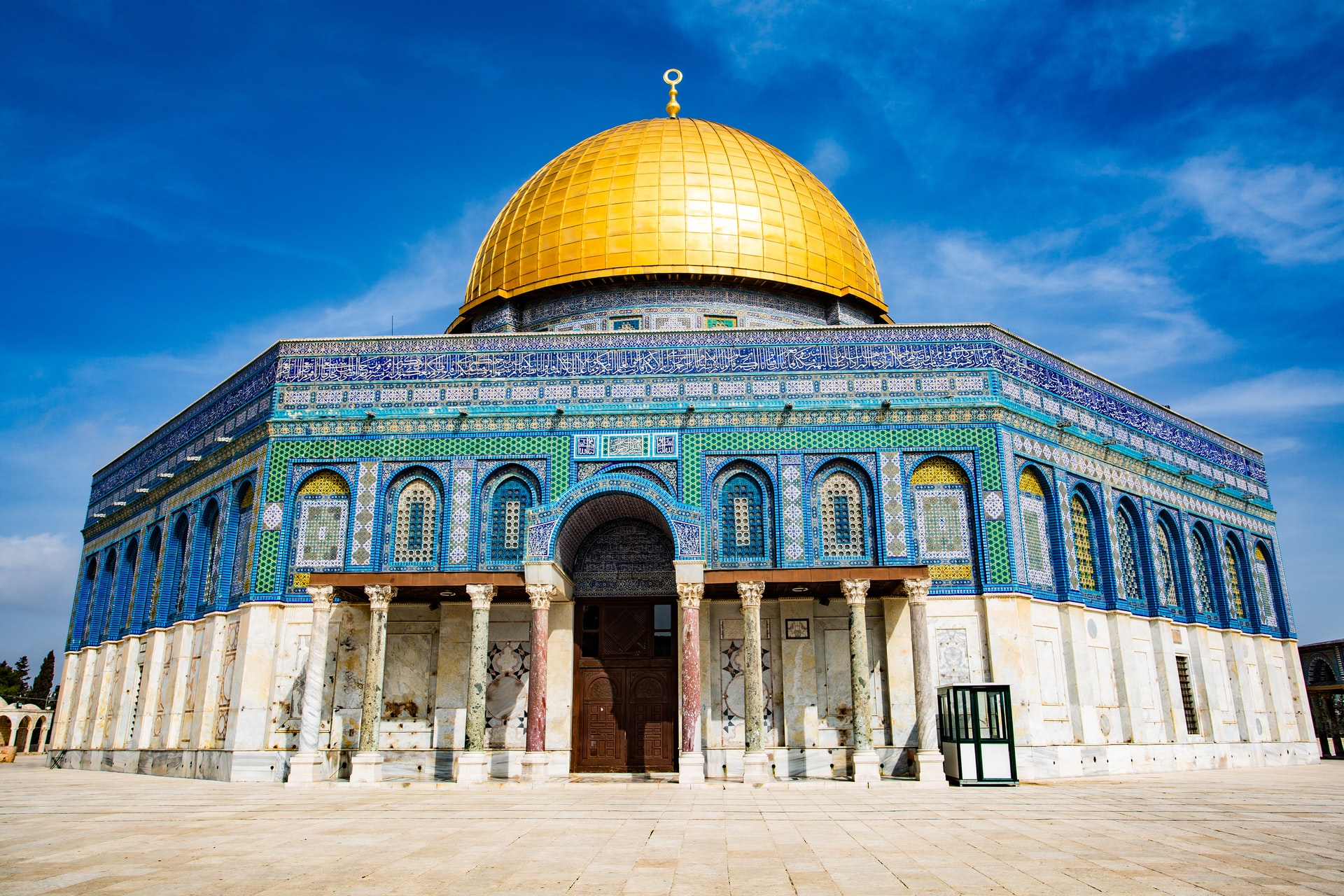
Dome of the Rock, Jerusalem, Israel. Photo by Stacey Franco on Unsplash
Urban Transport for a 21st century Jerusalem
So - yes - that leaves just one option…the light railway. And to tell you the truth, there are few people (either Israelis or visitors) that don’t love it. It’s convenient, fast, reasonably priced, runs long hours, and comes every few minutes. A combination of train and metro features, it’s taken the capital by storm - so much so that a similar system is now being built in Tel Aviv.
It wasn’t long back that Yerushalmis (the name for the locals) would complain bitterly at having to make car journeys within the city - it could be very miserable, and however long you thought it would take, it always took longer. Not that building it was a piece of cake either - the disruption, noise, and pollution caused many headaches.
But all good things come to pass - and the Light Railway was one of them. Today it’s ‘the’ way to travel in Jerusalem - cheap, efficient, and clean, all you need to do is hop on with your ticket and be whizzed away to whatever place you’re visiting - the Old City, Mahane Yehuda Market, Yad Vashem or the downtown shopping area.
Today, we’re going to delve a bit deeper into the history of the light railway and its practicalities today - where it runs, what it costs, when it operates…so that by the time you arrive in the capital, you’ll be in the know and ready to start exploring. Let’s begin.

Shop in the Old City of Jerusalem. Photo by Christian Burri on Unsplash
History of the Railway in Jerusalem
Discussion about building a light railway in Jerusalem went on for decades before a plan was actually enacted! Indeed, Theodor Herzl, who was the first real visionary of the establishment of a state for Jews, even imagined the project. The Ottomans looked into the idea, as did the British, but it took more than fifty years after Israel was created for work to begin on the project.
Construction began in 2002 and lasted for eight years, in which time there was notable disruption to the roads, particularly Jaffa Street, which runs through the city center. Establishing a light railway also entailed the building of a bridge (see below) as well as quite a few other renovation projects.
Not only was it hoped that the project would ease conjunction, as trams glided smoothly around the city, but it also envisaged the Jerusalem Central Bus Station and railway station next door being easily accessible to the line.
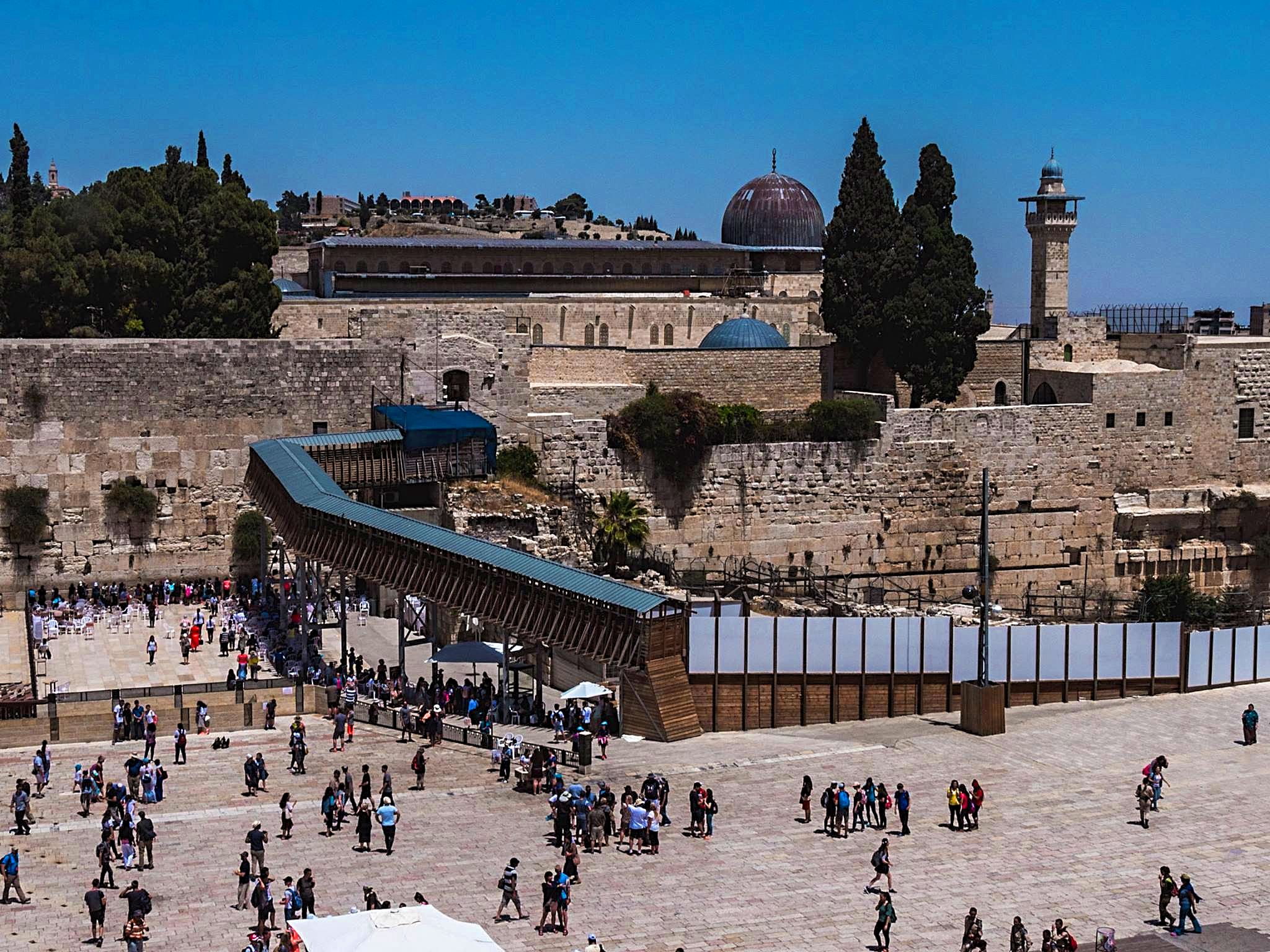
View of the Western Wall and of Temple Mount. Photo credit: © Dmitry Mishin
The Chords Bridge, Jerusalem
The Chords Bridge (which also goes by the name of the Bridge of Strings) was built in order to accommodate the Light Railway’s red line; today, it is one of Jerusalem’s most notable landmarks. Easily observed from many parts of the city, it’s the first thing you see when approaching the capital by road since it is located at the entrance to the city.
Designed by renowned Spanish architect and engineer Santiago Calatrava, the Bridge of Chords is a cantilever bridge, consisting of 66 steel cables. Designed not just for transport purposes (easing the enormous road congestion the city was grappling with) it was also envisaged, by Calatrava, as a way to enhance the ‘skyline’ and to encourage discussion about modern design.
Indeed it has. Today, it’s a structure you either love or hate. Calatrava designed it to resemble the Biblical King David’s harp, with the cables as the instrument's strings, although if you look at it from afar, it could also be regarded as a ship’s sail or a tent in the desert! Its striking design, for sure, has made it a major tourist attraction.
And on a practical note, the Spaniard kept pedestrians in mind every step of the way - next to the bridge, across which the Light Railway runs, is a glass-sided pedestrian walkway, allowing you to cross easily from one side to the other, particularly convenient if you’re heading towards the Central Bus Station.
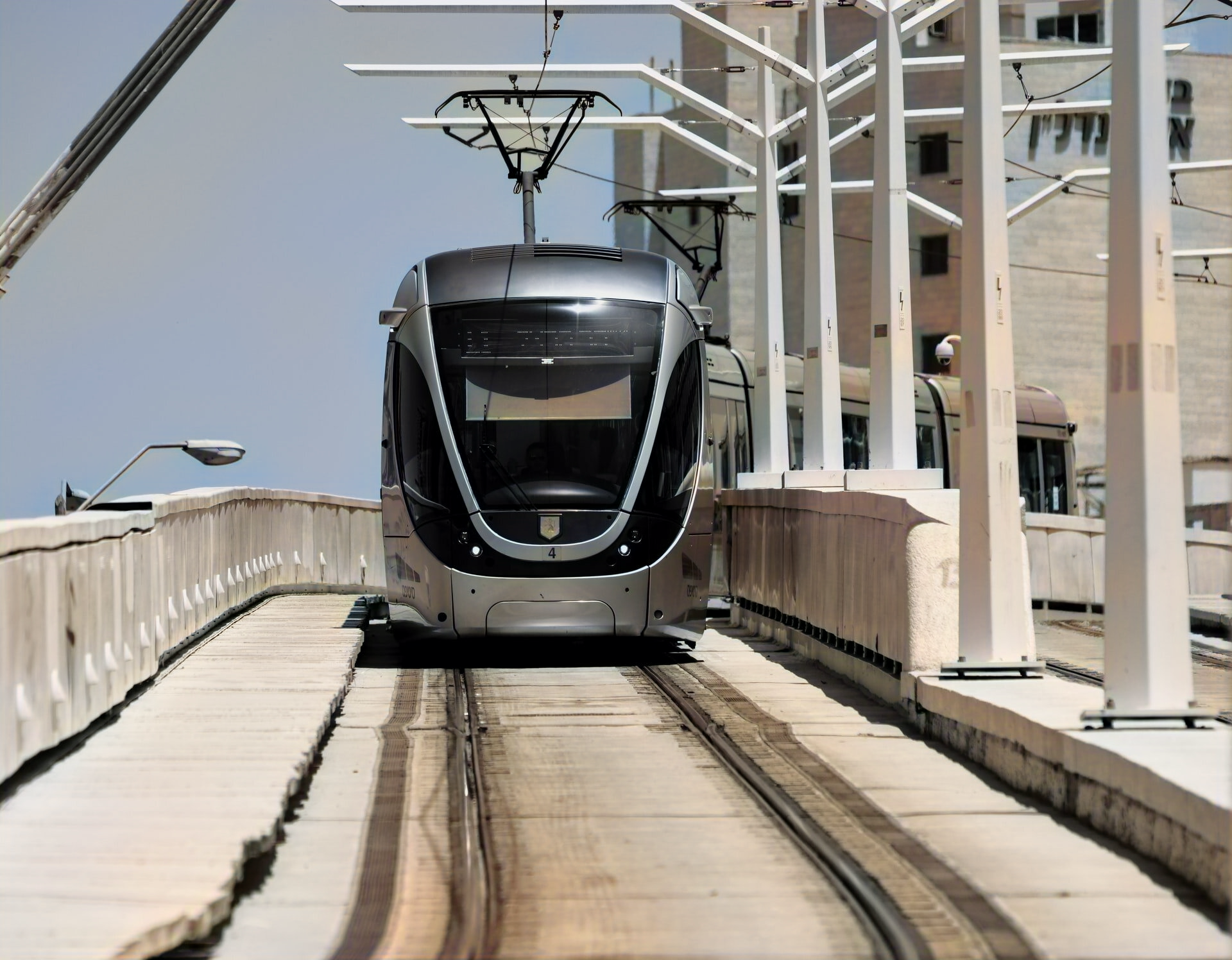
Light rail captured in the Chords Bridge, Jerusalem. Photo by Shraga Kopstein on Unsplash
Route and lines of Jerusalem Light Rail
At the moment, there is only one route currently running through the city - the red line. Nevertheless, other lines are envisaged (blue and green) and construction plans are in the works, in an attempt to connect the entire city to the network. Furthermore, a project to extend the red line out to Haaddash hospital has already begun.
The current line is almost 14 km long and has 23 stops along the route. It begins at Mount Herzl (where the famous Israel Defense Forces Cemetery is located) and runs to Pisgat Zeev, running all of the way through the city center (on the Jaffa Road).
From one end to another, it stops close by many places of interest for tourists, including Yad Vashem (Israel’s Memorial to the Holocaust), the Central Bus Station (where buses and trains to all parts of the country leave from), the Mahane Yehuda Market, downtown Jerusalem, the Old City (both at the Jaffa Gate and Damascus Gate) and close to the Hebrew University.
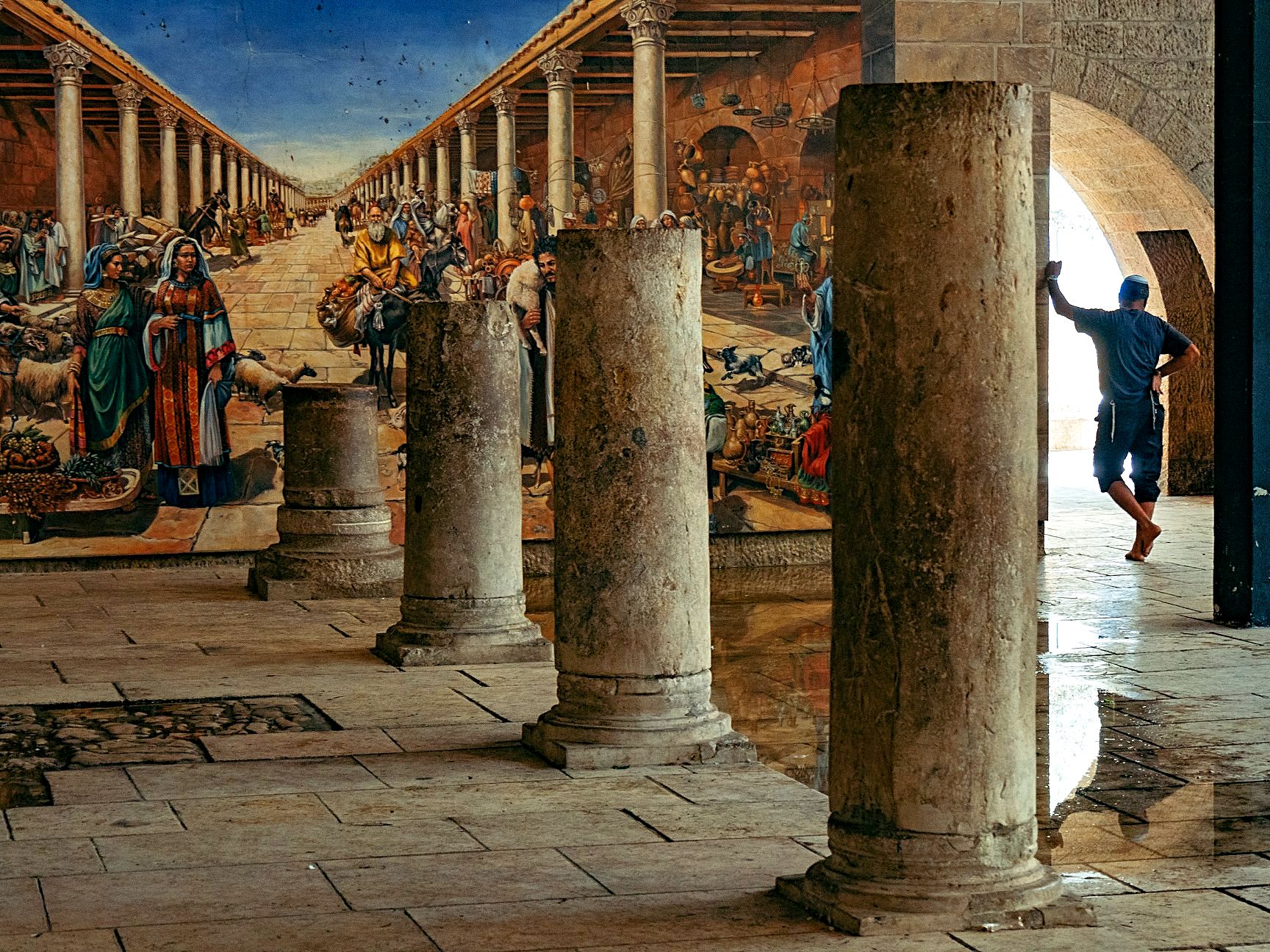
Byzantine Cardo in the Old City of Jerusalem. Photo credit: © Dmitry Mishin
How Much Does it Cost and How Do I Buy a Ticket?
The cost of a ride on the light railway is 5.90 NIS, whether you travel just a couple of stops or the entire route. Your ticket is valid for 90 minutes from the time you but, unlike the buses in Jerusalem, it is not transferable. There are three ways you can buy a ticket - through the machines, next to the tracks, via a green Rav Kav card, or through an app on your smartphone.
Machines - at every tram stop you will see machines and this is where you can buy a paper ticket. Instructions are in Hebrew, Arabic, and English and you can pay either with cash or a credit card. Please note that the screens are not a touchscreen - this means that to operate them you have to press the buttons at the side! Machines accept both coins and notes (usually!)
Rav Kav Card - purchasing one of these little green cards when arriving in Israel is really a smart idea. The Rav Kav card is both magnetic and electronic and can be purchased at many places, including all bus and train stations around Israel.
Once you have one (either with your name on it, if you're staying in Israel for a while and can provide the appropriate documentation) or an anonymous card, you can load it up with money whenever you choose.

Aerial view of the Temple Mount, Jerusalem. Photo by Robert Bye on Unsplash
You can buy in denominations of 30 NIS, 50 NIS, or higher amounts and it’s also possible to buy a monthly ticket, whereby you can make unlimited rides. Just ensure that your card is loaded up before you board the light railway because, once you are on the tram, you cannot purchase credit.Smartphone - since 2021, it’s been possible to pay for a ticket using your phone and this has become an incredibly popular option (especially for younger people, who live and die by this instrument!). The advantage of the Moovit app is that you don’t have to commit in advance to what kind of ticket you’d like (single, day pass, week pass, or month pass).
You simply put in your credit card details beforehand and the app will calculate what you are due (so, for instance, if you take 5 rides in a day, the app will place a ‘cap’ on how much you pay). Simply upload the app to your smartphone then sign up, and put in your card details.
This will let you launch the app when you board the tram. Your phone’s camera will be notified and you can hold it up to the QR sticker close to the door or the tram (or bus, if you are using a bus). Once you have scanned it, you will receive validation (and often hear a beep and see a green light). It is your responsibility to scan your phone and, by law, the driver or ticket inspector can ask to see proof that you have paid.

Сloseup of ceramic pomegranates in the Jerusalem market. Photo by Nixx Studio on Unsplash
Light Railway Practicalities
The Jerusalem Light Railway runs every few minutes, which means that you won’t have to boil or freeze, whilst waiting on a platform for the next tram to show up. As stated above, you must buy a ticket before boarding and validate it once you board. Ticket inspectors patrol the line’s route on a regular basis and if you are stopped and do not have a valid ticket you will be fined on the spot.
Don’t risk jumping on if you’re in a hurry - just buy your ticket and wait a few minutes - it could save you a hefty fine! Many Israelis are not skilled at waiting patiently, so don’t be surprised, when you are trying to alight, that crowds will attempt to board whilst you’re still trying to step down. Stand your ground!
What Hours Does the Light Railway Operate?
The Light Railway operates from early in the morning until late at night, in Jerusalem. The first trains set off at 5.45 am and the last at midnight. These times are valid for Sunday to Thursday. Between Friday afternoon (1-2 hours before sundown) and Saturday evening (an hour after sundown), the light railway does not operate.
This is because it is Shabbat and no public transport operates in Israel on the Jewish Sabbath
(that is the light railway, Egged public buses, and the rail service). The same is true for religious holidays (which, like Shabbat, begin at dusk and run until the following day at dusk). Make sure you check the timetable online, beforehand, if you are unsure, otherwise you will end up having to hail a cab (which could end up rather costly).
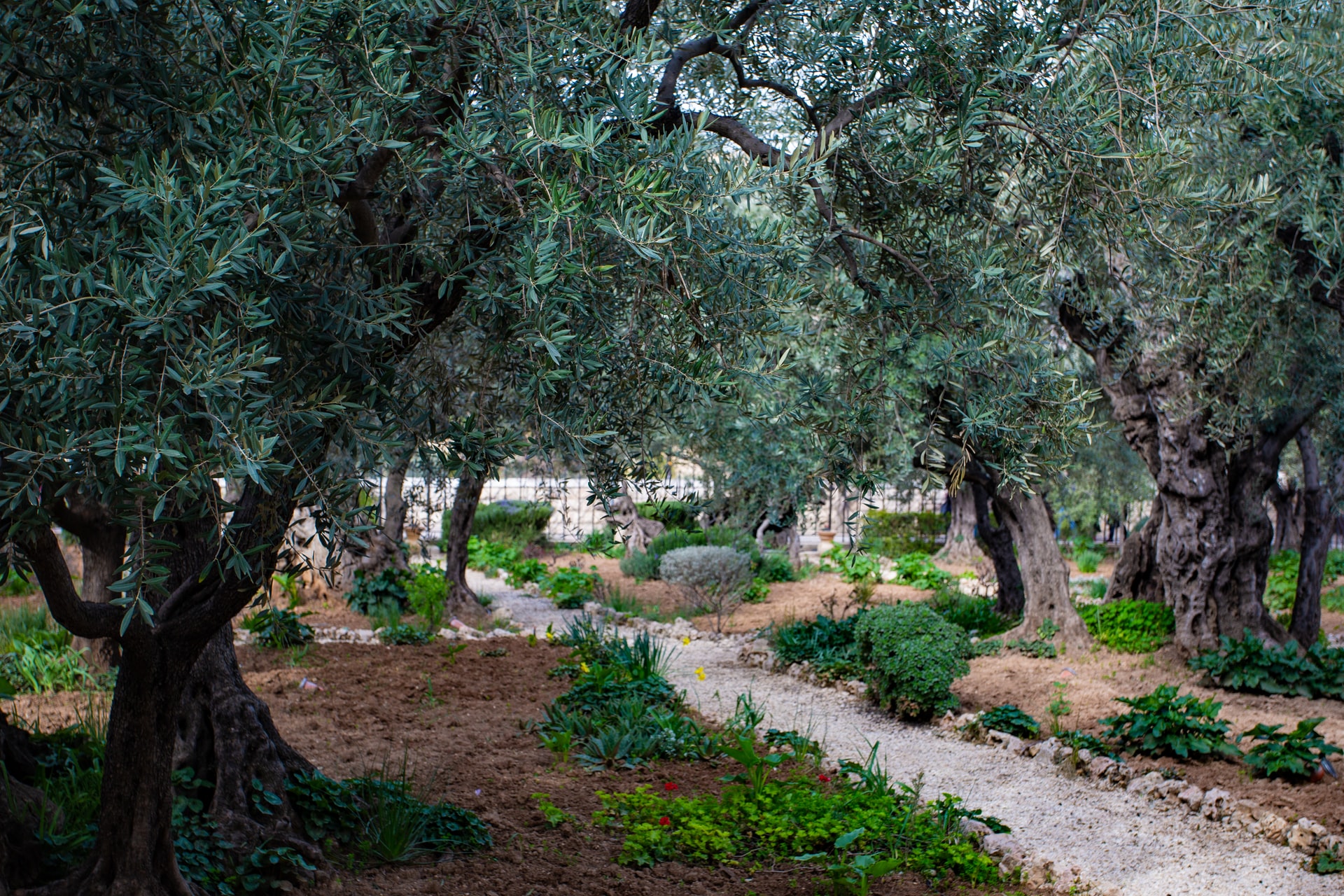
Garden of Gethsemane, Jerusalem, Israel. Photo by Stacey Franco on Unsplash
Picking Up the Light Railway on Arrival in Jerusalem
If you're coming by bus or rail from another part of the country then you’re in luck - the tracks are a stone’s throw from both the central bus station and the Yitzchak Navon Train Station (which are next door to each other). When you alight, you will see escalators that will either take you up or down to the ground floor.
The complex also has stores, a pharmacy and coffee shops, a bakery, and fast food stands), as well as a number of spots at which you can pick up a Rav Kav card. Simply walk outside the main entrance and head to Jaffa Road - which is adjacent to and actually in sight of the station. It’s really just a 1-2 minute walk. The result is a seamless transport experience.
In conclusion, the Jerusalem Light Railway has revolutionized travel in the capital, not to mention making it easier for visitors arriving in the city to connect quickly and without fuss to trams that can whisk them around the city in no time at all. Our view? Leave your car at home and take advantage of 21st-century public transport. And enjoy Jerusalem! Of course, if you wish to travel hassle-free, it's better to join one of the organized Jerusalem day tours or book Jerusalem tour packages.
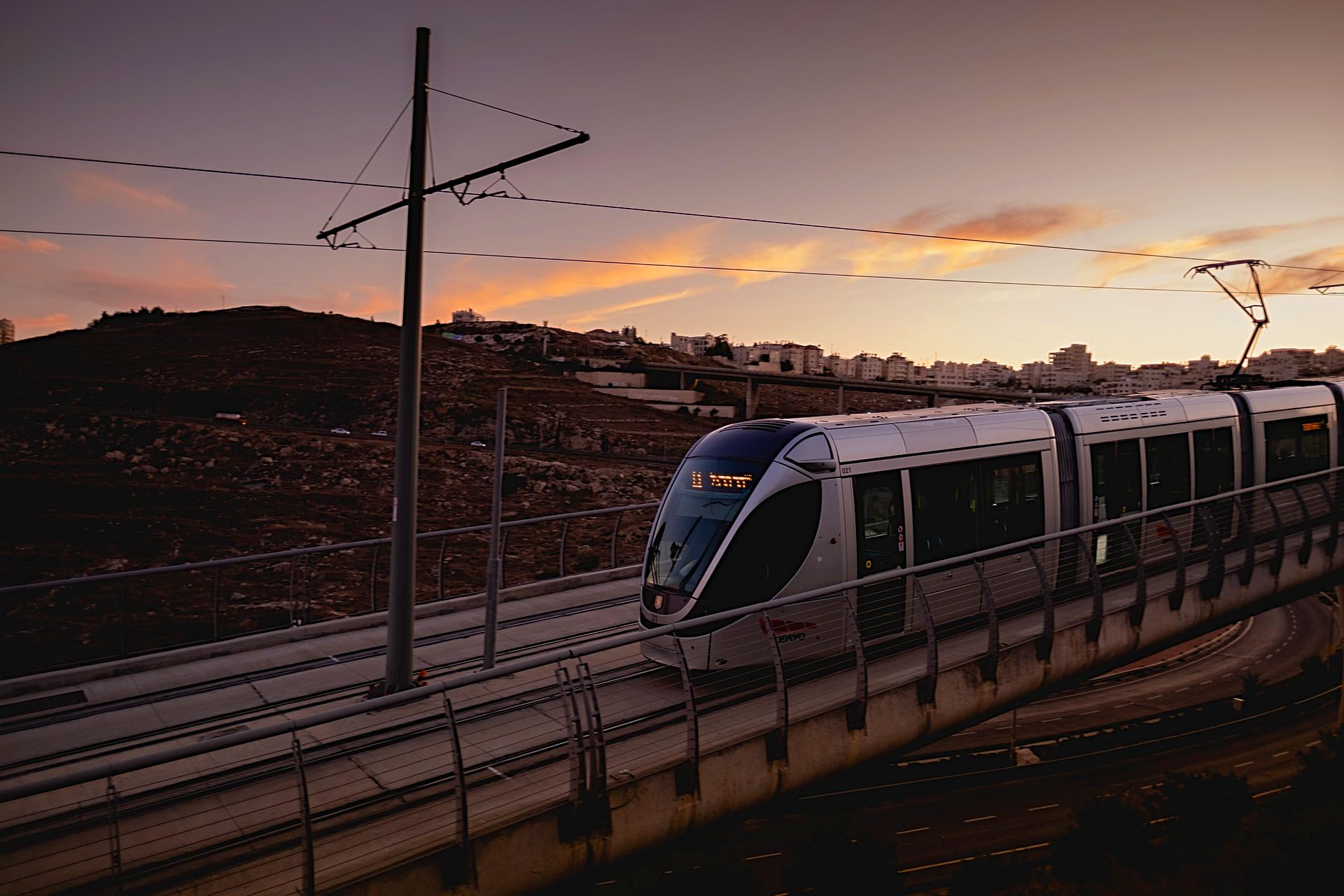
Views of the light rail at Yekutiel Adam station in Jerusalem, Israel. Photo by Levi Meir Clancy on Unsplash
 Login / Register
Login / Register
 Contact Us
Contact Us
 Certificate of Excellence
Certificate of Excellence Guaranteed Departure
Guaranteed Departure Low Prices Guaranteed
Low Prices Guaranteed 24/7 Support
24/7 Support




